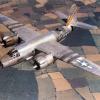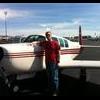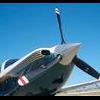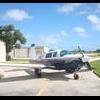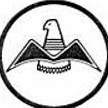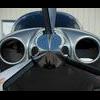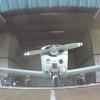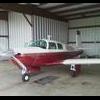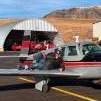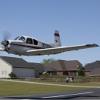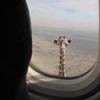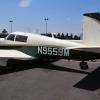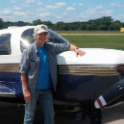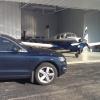Leaderboard
Popular Content
Showing content with the highest reputation on 04/27/2016 in all areas
-
I bit the bullet and bought Ryoder's M20C last week. He'll still be flying it, but I have a house with a hangar on a strip, so it made more sense for me to own the plane. This morning I did my first solo in a complex, first solo in my new (to me) mooney, and first solo from my house. I really love this plane! Special shout out to Ryan, who, through his own quest to become an aviator inspired me to achieve my dream!7 points
-
Yes he did. It's a pretty sweet ride. Only negative of the plane at all is the TSMOH, but it's still running good. I had a little trouble learning how to put the gear down and locked. I was trying to muscle it into the lock with a bad angle from the shoulder and I nearly ripped my measly muscles off the bones trying so hard. Once I figured out how to get the angle right I've had zero problems getting it locked in. Mastering the J bar comes with time and exercise.4 points
-
Another thought. Landing is best done through understanding the aerodynamics of the situation and being able to use stick and rudder skills to FLY the landing. This isn't like a tennis serve or a golf swing where you rely on it to be consistently the same every time and the "muscle memory" is all you need. I think focusing too much on making every situation the same prevents the real skill which is all stick and rudder... IMHO Sent from my iPhone using Tapatalk2 points
-
Yeah, a corvette. LOL He's welcome to fly 79396 whenever he likes, but I suspect he will end up buying another plane eventually - there's still room in my hangar after all.2 points
-
I agree..Before pulling the trigger on anything I really want to put my Brittain through the paces and make sure it is dead balls on accurate just following a heading. I use it often, but it does require correction occasionally with fuel imbalance and stronger winds. I cut it some slack because the precision was not required as it is with IFR. Just seems to take time to settle in before following a semi-tight course(and I understand that is how the system works). I sometimes wonder if it's just older technology. This is in contrast to my STEC 30 Alt Hold. It picks up solid and works perfect, no deviation. I've used the Brittian pretty regular over the past several years and I know all the servos etc are good. One was recently (last 6 mnths) serviced and the others checked. I guess I just have some apprehension about the older ( but still valuable and working) technology. If I was not pursuing more training and the opportunity was not there regarding the refinance of my bird I would leave well enough alone. I think my mistake was by flying with one of the other guys on the field and watching his AP couple up on the approaches making life easier. Made my system look kind of antiquated. We later tried a few approaches last week in mine and I was a flying train wreck trying to get lined up at my entries at the correct altitude while using my existing system...The fact he was not familiar with IFR procedure on my GTN750 and I'm still learning IFR procedure and data entry into it probably did not help, but it was pretty ugly regardless. Lots to think about.. Thanks for the suggestions [emoji4] -Tom If you want your accutrack to stay glued to the magenta line set your GPS to .3 mile full scale deflection of the CDI during all ops. This is a setting in your GPS. Set the accutrack to high sensitivity and it will follow a tight course glued to the magenta line making corrections at the slightest deviation from the track.2 points
-
Btw this was not a bad p (ground) lead this was a bad mag. To clarify... In a bad P lead situation you do this: Both = normal rpm L or R = no drop in rpm for the selected mag with the bad p lead L or R = normal mag drop for the selected mag with functional p lead OFF = normal mag drop but engine won't shut off as engine is running (ungrounded) mag with non functional p lead For a dead mag you'd see this: Both = run up RPM will have lower RPM, higher MAP and higher EGT than normal. Important to note what your normal EGT is for a given RPM as this would be your first clue. L or R: good mag selected bad mag grounded = no drop. L or R: bad mag selected, good mag grounded = engine dies OFF = engine dies. Not a bendix guru, just ASEL. -B2 points
-
After searching for years, I finally came across two articulating seat frames which came out of a M20K (don't worry, nobody died in them). I installed one of them in my J model and am offering up the second frame, which also comes with the back if needed. Imagine you or your passengers riding up high and seeing way over the panel with ease. No longer will your passenger reply with "where, where, I can't see anything". PM me with an offer for it. Keep in mind that the factory will custom build one for you at a cost of $3,500, and that they are impossible to find in salvage yards such as Wentworth.1 point
-
1 point
-
1 point
-
Hopefully this is my last Cessna video and subsequent videos will be in my Mooney. But I'm starting to figure out this software a little better.1 point
-
1 point
-
I've got some more questions for you Bob but since this thread looks like this I'll start a new one when it's time.1 point
-
Not familiar with Fly Bay Area but the deck of my house in Sausalito overlooks Seaplane Adventures' seaplane base. I'd go with them because of the seaplane aspect... very hard to find in CA (only 10 bases in the whole state, and this is the only saltwater base besides Catalina). Not to mention they fly a DeHavilland Beaver with a booming, badass radial engine. I've never flown with them but I would in a heartbeat if I didn't have my own plane. BTW, their website is http://www.seaplane.com/1 point
-
anyone experienced easier landing in winter vs summer or is it just another golf club rationale? Ah yes winter rules..."HEY WHITEY WHERES YOUR HAT"1 point
-
sorry I meant serial number The schematics are by serial number. I found the J ones online here: http://mooney.free.fr/Manuels%20M20J/M20J/Mooney%20Service%20Manuel%20M20J%20Vol.%202%20of%202.pdf1 point
-
Finally located it, thanks for the help Scott - you always give good insight!1 point
-
Walmart is having a sale. Okay then! $375.02 I don't need this, my short of stature wife does. I got her one of these: But now she keeps saying she wants a big person seat. What am I to do? [emoji26]1 point
-
The shunt is likely on the right side, just behind the firewall. It is hard to access. That was the location for my '77 and '81 and I expect yours is similar, but wouldn't swear to it. There is a small aluminum "shelf" with electrical bits installed there, and it has three screws that come through the fuselage skin to help support it.1 point
-
congrats to the OP. Ryoder did quite a few things to the plane when he owned it. Hopefully you'll be able to enjoy it.1 point
-
The one piece of advice that made all the difference for me when I had a little landing slump (doing EXACTLY what you described above) was to make sure I was looking WAY WAY WAY down the runway after I round out. Hope this helps!1 point
-
^^^^^ The over use of ty wraps and then the under use. That braided wire down low should not be that close to the lower terminal. The silicone protective boots over the main terminals are for accidental strikes not for things to be laying against. There also looks to be a control wire down around the mounting base that is could be the energize wire. That should be rerouted. It might be the ground wire to the relay, then it is probably OK. I put myself through college doing 2 way radio work. Summer time sweat along with 24 volt cement mixer trucks. Dropping a wrench across a B+ will get your attention. You don't want to have that happen under a panel while flying along.1 point
-
I had a very similar issue. I decided the blowby was worth the top end overhaul. I am very happy with my decision. I turned wrenches for 30 hours, time towards my A&P, got to know the plane and my maintenance crew. The plane now burns 1 qt every 25 hours. The question really is, do you trust your engine at night or IFR or with your family? If the answer is no, then I think you have your answer. Sent from my SM-G900V using Tapatalk1 point
-
It's a solenoid, a giant relay, likely for master power. That power wire tie wrapped to the cable, I recommend seperating them. When that cable chafes through the insulation on the power cable you will have a big problem on your hands. There is a lot going on in the photo, including a coax crossing over the solenoid. Sorry to pick at it, but I would hate for you to have problems later that are easily cleaned up now.1 point
-
Holy macaroni batman, seems like it's gone way beyond the annual hope parts start going back in soon. I think the group is as anxious as you to see it back in the sky.1 point
-
Yes, excerpt from an article from Left Seat below. I know....it's a little weak but it's all I've got. So, does putting both mags in a single unit and driving that unit with a single shaft from the engine offer the same redundancy as two independent mags? At first, the answer would appear to be no. If that common drive coupling to the engine fails, both mags cease to product spark and the engine quits. But if you think about that single-point failure potential a little more, the single drive dual mag doesn’t seem so bad. After all, there is only one gear train in the engine to drive mags no matter how many mags there are. If those gears fail, all mags on the engine do too. And essentially all magneto problems involve the components inside the mag, not the drive coupling to the engine. The dual mag has independent points, rotor, coil and so on making the operating components redundant.1 point
-
Thanks! In Canada, there's a number of key phraseology differences... Instead of "climb and maintain..." or "descend and maintain..." you'll often hear "re-cleared..." Instead of "descend, pilot's discretion..." you'll hear "when ready, descend..." Instead of "line up and wait..." you'll hear "at the threshold, line up and wait..." Instead of "radar contact..." you'll hear "radar identified..." They like saying "check that" instead of "roger that" and of course decimal instead of point. I try to use their phraseology when flying there, but sometimes I forget... Thank you! Ugh, parking has become a nightmare at Springbank, I'm sorry to hear the pricing went up again... There aren't many good options near Calgary especially if you want a 5000ft runway and an ILS... Thanks! I can't help talking fast on the radio... far too much time spent flying into class B airports and busy airspace (SFO/LAX/NYC)... My first time flying into Hay River, NT, the CARS operator (basically a weather reporter and not ATC) asked me to speak slowly since he wasn't used to fast talking pilots... I should post that video actually. -Andrew1 point
-
Just to be clear and I hope I'm not sounding defensive, I'm just trying to help these guys figure out the best way to clean their fuel tanks in preparation for applying sealant. When I stripped/resealed mine I used SR125A which is a polysulfide stripper similar to polygone. I don't know the chemical makeup of SR125A or polygone other than it appears to take longer to dissolve the sealant....and is very effective as a paint stripper. The Methylene Chloride was brought into question by Byron as to whether they could be doing more harm than good using it as a stripper inside the fuel tank environment. Now that we're to the point where the stripper has been used, what's the best method to mitigate any damage if there a chance the Methylene Chloride stripper could cause corrosion. The manufacturer states to clean with water. Your suggestion sounds like acetone would be better. I use MEK quite often in my work so I'm familiar with it, but my use of MEK is not to neutralize or remove dichloromethane. Simply to provide a good surface for substrate adhesion for the polysulfide. I had someone send me instructions for stripping and sealing Mooney fuel tanks. It came from an IA who gave his name and phone number at the end the document. I chose not to use a "store bought" stripper simply because I had more than enough of the good stuff due to minimum quantity ordering. Does this IA know if his methods are good? I don't know. I do know in researching stripping and resealing that a very prominent MSC suggests using MEK to thin the polysulfide if needed. Another well researched paper suggest MEK will chemically change polysulfide and toluene should be used to thin polysulfide. This go around I have opted to use 3M SR strippers and radial discs to remove the bulk of the sealant, but I haven't started yet so we'll see how things go. I know this.....the older I get, the more I realize how much I don't know and am always willing to listen to advice from someone who has experience or knowledge, but still take the time to research on my own.....just in case.1 point
-
I called Dave Nolan at LASAR and mine is on the way. Kit includes lens, brackets, and screws. $59 + shipping. Easy peasy.1 point
-
I didn't take the time to read the full thread, so I apologize up front if I am repeating anything. It looks like you have Accutrak, but not the Accuflite heading adaptor. If this is true, you might want to consider that simple add on from Britain. I've installed a number of STEC 30s and they are good, but the combination Accuflite and Accutrac is equally as good, perhaps even better in one way. As I recall, the System 30 will track Nav or heading, but not both. When you turn on Accuflite and Accutrac at the same time, you have a really well behaved autopilot that will perform nice intercepts and tracks really well. You can adjust the heading bug to compensate for a stiff crosswind. Nav tracking alone will not do such a nice job. GPSS is nice, and I really recommend it for the System 30, but with the Brittain combo that I described, it will fly as well as the GPSS. You only have to do the additional step of setting your heading bug to the new track provided by your GPS. While not approved for approaches, I can tell you it will track a LPV or ILS rather nicely to the numbers with very little pilot input...especially if you keep your approach speed on the high end. Not trying to talk you out of the STEC, they really are nice, but you have the basic makings of an equally nice autopilot for a fraction of the price. You would need the Accuflite and a DG with heading bug.....which you would need anyway.1 point
-
I figure that over the past 50 years I've made close to 15,000 landings and I think that I've finally discovered the secret to making good landings, every time, in any airplane. In the beginning, I figured that it had to do with maintaining a stabilized approach and proper airspeed control; but obviously, that wasn't it. Then I worked up a theory that added planetary alignment and moon phases to the equation and I was getting closer. I finally put it all together when i figured out how to hold my mouth! You have to hold your mouth just right and the planets have to be in proper alignment and the moon has to be in the proper phase, all of that in addition to flying a nice smooth stabilized approach and maintaining the proper airspeed. If you get a greaser other than when you're doing all of that, you're just lucky. Seriously, when it comes to landings, it is all about a stabilized approach and proper airspeed control. As a long-time CFI, I note that it's not uncommon for little things to creep in to our personal techniques and SOPs over time - things that we might not even realize that we're doing. Frequently, it's flying too fast. 1.2Vso to 1.3Vso is plenty fast as you're crossing the proverbial fence. A lot of us habitually approach on the fast side then we as a knot or two for the wife and kids and a knot or two for this and another couple of knots for that. I don't care what you're flying - that's sloppy airspeed control and will screw up your landings in just about any airplane. The other thing I see quite a bit of is pilots using poor techniques to compensate for bad techniques. I've seen pilots who fly their approach too fast resort to things like only using partial flaps and/or bleeding off the flaps in the flare. The best recommendation I can give you is to find a Mooney savvy CFI and go spend an hour with him. It's something that we all really ought to do more often. The obligatory BFR is really too long to go between recurrent training sessions.1 point
-
Happens to all of us! Don't worry... Just go up there and do several landings and everything comes back into play. No magic lotion available... only repetition.1 point
-
1 point
-
It happens to everybody, and it seems to happen most to people who fly a lot. Happens to me probably 1 or 2 times a year, and I've seen it with the people I'm flying with also. Sometimes I'll even tell the person I'm flying with that I'm going through a landing slump so don't expect anything pretty. The problem is the more you think about it and try to get better, the worse your landings get. Usually for me I'll get to the point where I say "ah, screw it, I don't care as long as it doesn't hurt the airplane". Then, like magic, my landings go back to normal (which for me equates to average).1 point
-
It is a fuel filter. For years I bought the approved "air" filter for the PC vacuum system. I think I was paying close to $20 for each of the 3 filters. Well, one year, the box showed up and one of the labels was peeling. I continued to peel it to find "Fram G2" underneath. The ones they sell today are clear plastic, the ones in the 90s were opaque.1 point
-
Or you can spend 59 dollars get the complete ready to install kit. What's your time worth1 point
-
It's possible if for say you maybe left the dipstick unscrewed back into where it goes.... not that I would know that condition1 point
-
1 point
-
I'm planning to be there Friday PM and leave Saturday PM. I'll be volunteering Saturday morning.1 point
-
That sounds like a pretty accurate synopsis of the events. My recollection is limited to what I could hear while lying on my back waiting for people to get to me. I'm very thankful for all of the rescue personnel and individuals involved in my care. I'm remarkably uninjured for what I've been through. Robb1 point
-
1 point
-
While the top speed of the Vette and the Mooney are about the same, I can run the Mooney at top speed all day long without government intervention. You can't say that about the Vette. The few opportunities that I have had to drive Corvettes and other high power cars just left me frustrated. It is painful to drive the speed limit in them. So I have a Toyota pickup that I dutifully drive the speed limit. BTW, I'm not a total wuss I do have a 180 MPH motorcycle that I let run once in a while. Matter of fact I think I'm going to ride it right now...1 point
-
Dr. Brinkley's is one of seven (or so . . . who knows what's in some of those unopened hangars?) Mooneys based at our home airport of Pogue, here at Sand Springs. Taking off either way (but especially to the South), there's really nowhere to aim but among trees unless you can get over at least 600 feet or so so you can make the highway or the river if heading south, or an open small but better-than-the-trees field off to the left going north. What happened to Dr. Brinkley's Mooney remains a mystery. He was apparently having engine trouble, did manage to call in a Mayday, and was immediately pursued by airplane (a local CFI in a 172, located him and circled overhead) and truck (the airport manager jumped in his truck, drove to where he could see the 172 circling overhead, then bushwhacked through the woods until he located Dr. Brinkley). The pair of CFI and manager remained on station until rescue folks arrived, at which time Dr. Brinkley was extracted from the Mooney. These are the facts as related to me by the CFI and the airport manager following the events, so it's all second-hand information, but I presume it to be accurately reported, given the nature of the individuals involved. The airport manager runs the tightest little operation I've seen of it's kind, maintaining a beautiful airport with inexpensive fuel, great facilities, and a warm and welcoming atmosphere. We do love our Mooneys here, and we suspect that Dr. Brinkley will find another and be back in the air soon. We hope so.1 point
-
I always get a chuckle when I hear owners selectively indicate some costs are not in their run rate. [emoji86][emoji85][emoji87] I look at it as a full disclosure activity. If you didn't own a plane, the money wouldn't be spent. All those "extras" are material when you look at overall ownership cost. I once calculated how much I spent on aviation. I could have retired 2 years ago...1 point
-
So today while I'm at work my wife texts and says it's such a nice day how bout I meet you at the hangar after work and we go flying. How cool is that. With nowhere in particular to go we just decide to make a lap around our lake. Got a BFR to do so I slow it down to level flight at 90mph and do a couple 30 degree 360's thought about a stall but not with my wife she wouldn't like that. The wind was 10 plus knots on the approach swinging from down the runway to 90 degrees really liked my pattern and landing. Sometimes the best place to fly is nowhere1 point
-
I got involved with Mooney aircraft when I purchased my 1968 F as a project airplane. It had 1900 hours and sat for many years in a Dallas hangar. I stripped everything out of the airplane and proceeded with the rebuild starting with an empty airframe. For those of you that know it today, it is a modern looking Mooney with a Johnson bar and hydraulic flaps. I have been a pilot since 1985 and learned to fly when I lived in Portland, Oregon (which I might add was a great place to get my IFR ticket since all my time, from the 50 -125 hours then required then for the IFR checkride, were in actual conditions). I was a symphonic clarinetist back then and then went to medical school at age 37. Now I am back in the Boston area where I grew up. I remain a frustrated engineer (which is probably why I took on the rebuild project). I would love to meet other Mooney owners in New England and elsewhere. John Breda1 point
-
Kelly, Clarence was being facetious to make a point. He owns and operates a MSC in Canada. I think he most certainly understands the regs. He was trying to help Robert understand.1 point
-
Here is my approach to owners who want to go past TBO either hourly or calendar as an IA. 1. Per the CFR's, the owner/operator is 100% responsible for making sure that the required maintainence is performed and documented. I have no problem doing any inspection on equipment that is past TBO, if it is operated under Part 91 and is airworthy per the maintenance manual. 2. I don't like new customers who bring me aircraft in rough shape, chances are they've been run off from other shops for any number of reasons and I will call the last shop. I've learned to usually turn them away unless they are new to the aircraft, then I'm welling to help, at least once. 3. If they have owned the aircraft for some time and are showing do diligence by performing oil testing since going over TBO, they will be a repeat customers. 4. Argue with me over what's legal and what's allowed based on your interpretation of what is in the books or from what you read online, your case better be strong and correct, or chances are you'll need to find another IA. Sorry1 point
-
1 point
-
In my opinion Dave is the exception. I personally want to fly my plane, not work on it. In too many instances items were found by my experienced MSC that I don't think the non Mooney mechanic would have found. Also, while some like to get into the nitty gritty of maintenance, time is all we have in life and there are other things I would rather be doing like flying and teaching in airplanes.1 point


